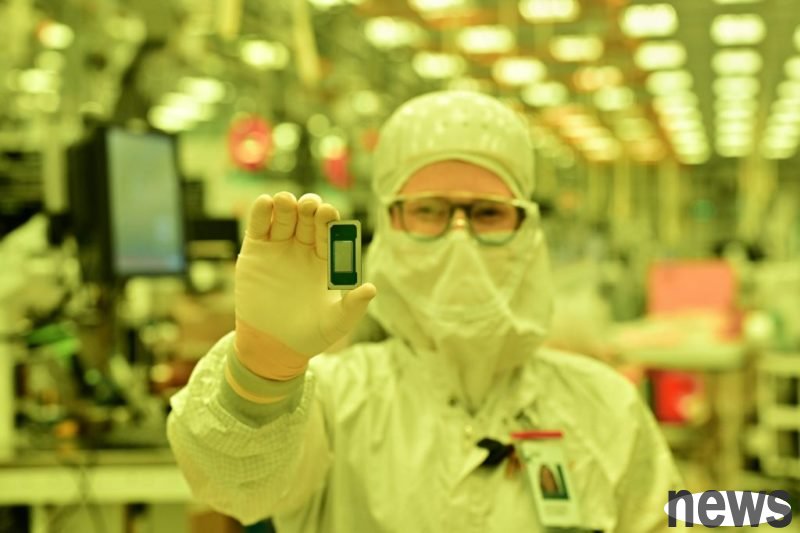
After experiencing a sharp rebound in the past few months, the stock price of chip giant Intel officially announced its third quarter 2025 financial report last week, instantly becoming an event of great concern on Wall Street. Not only did the company achieve revenue growth, but its profits were also much higher than market expectations, laying a clear signal of progress for its ongoing transformation. Although the transformation is still in its early stages, market participants said the financial report revealed six key points that give investors hope for its future.
1. Revenue and profit performance were outstanding, far exceeding analysts’ expectations
Intel’s revenue in the third quarter reached US$13.7 billion, an increase of 3% compared with the same period in 2024. The figure was $560 million higher than the average analyst estimate. Even more significantly, adjusted EPS was $0.23, well ahead of analysts' expectations of $0.01, and a sharp turnaround from a loss of $0.46 per share in the same period in 2024. However, Intel warned that the complex transaction process with the U.S. government may cause third-quarter results to be revised in the future. Intel has worked with the U.S. Securities and Exchange Commission (SEC) to ensure the validity of its accounting, but the process has been paused by the U.S. government shutdown.
2. The balance sheet has improved significantly, providing support for foundry investmentIntel Chief Financial Officer David Zinsner previously pointed out that strengthening the balance sheet is one of Intel's top priorities in 2025. In particular, Intel's financial position has been strengthened thanks to recent investments from multiple parties, including from the US government, Softbank (Softbank) and NVIDIA (Nvidia). As of the end of the third quarter, Intel's cash and short-term investments had reached US$30.9 billion, up from US$22.1 billion at the end of 2024. At the same time, the company's total debt decreased by about $3.4 billion to $46.6 billion. In addition, Intel received $3.3 billion from the sale of a majority stake in Altera. The solid improvement in the balance sheet provides the company with greater buffer space to continue investing in its foundry business.
3. The PC market has regained momentum and data center profitability has rebounded.1. The PC market experienced a period of downturn after the initial surge of the epidemic, but the situation is currently improving. Intel expects the total addressable market in 2025 to be close to 290 million units, higher than Gartner's estimate of 245 million units in 2024. That would represent the strongest growth since the 2021 pandemic boom. In addition, in the third quarter, Intel’s client computing division revenue was US$8.5 billion, an increase of 5% from the same period in 2024. Reasons for the strong performance include the Windows 11 update wave driven by Microsoft's end of support for Windows 10, as well as the market shift to new products such as Lunar Lake and Arrow Lake.
2. The data center and AI business unit’s revenue in the third quarter was US$4.1 billion, a decrease of 1% from the same period in 2024. However, its profitability has improved significantly, with segment operating profit margin reaching 23.4%, much higher than 9.2% in the same period in 2024. Therefore, Intel is optimistic about future data center CPU demand, further driving the two main drivers of TAM expansion, including underinvestment in traditional data center infrastructure during the AI boom and soaring demand for infrastructure that can handle AI inference workloads. Chief Executive Officer Chen Liwu noted strong demand for the company's latest Granite Rapids chips.
4. Intel 18A process lays the foundation for the next three generations of products, but the yield rate still needs to be improved.The Intel 18A series manufacturing process is crucial to Intel’s foundry business and product business. The upcoming notebook computer Panther Lake processor will use the Intel 18A process and is expected to begin shipping before the end of the year. This will be followed by Nova Lake for desktops, and Clearwater Rapids and Diamond Rapids for server CPUs. According to Chen Liwu, Intel 18A and its variants will support at least the next three generations of PC and server products.
However, the current yield of Intel's 18A process is a problem. Zinsner, the chief financial officer, said yields were adequate to handle supply but not yet close to what was required to drive appropriate profit levels. The complexity increases as Intel's 18A process involves new transistor designs and the industry's first introduction of backside power supply technology. Yields are improving, but profitability depends on bringing yields up to industry standards.
5. Recent supply constraints will affect the PC businessIntel is currently facing a supply and demand situation. The market has strong demand for chips using the old Intel 10 and Intel 7 processes, but there is insufficient production capacity. Zinsner acknowledged that capacity constraints impacted the company's ability to fully meet data center and customer product demand in the third quarter. In response to this situation, Intel plans to prioritize its data center business in the fourth quarter. The company will sacrifice production of entry-level PC chips to increase output of lucrative server CPUs. This will result in a slight decline in sales in the Client Computing segment, while the Data Center segment will post strong quarter-over-quarter growth. This situation will eventually ease as new processes advance and demand for older parts subsides.
6. Long-term position as the leading domestic manufacturer in the United StatesIntel is still in transformation mode, and its strategy will take time to show results. With Panther Lake and Nova Lake launching in 2026, the company is expected to gain market share in the PC business. Prioritizing the development of server CPUs in the short term will also help boost the data center business. However, the foundry business has a longer timeline. In order to achieve sustainable operations and profitability, both Intel 18A and the next-generation Intel 14A process need to win major customer orders.